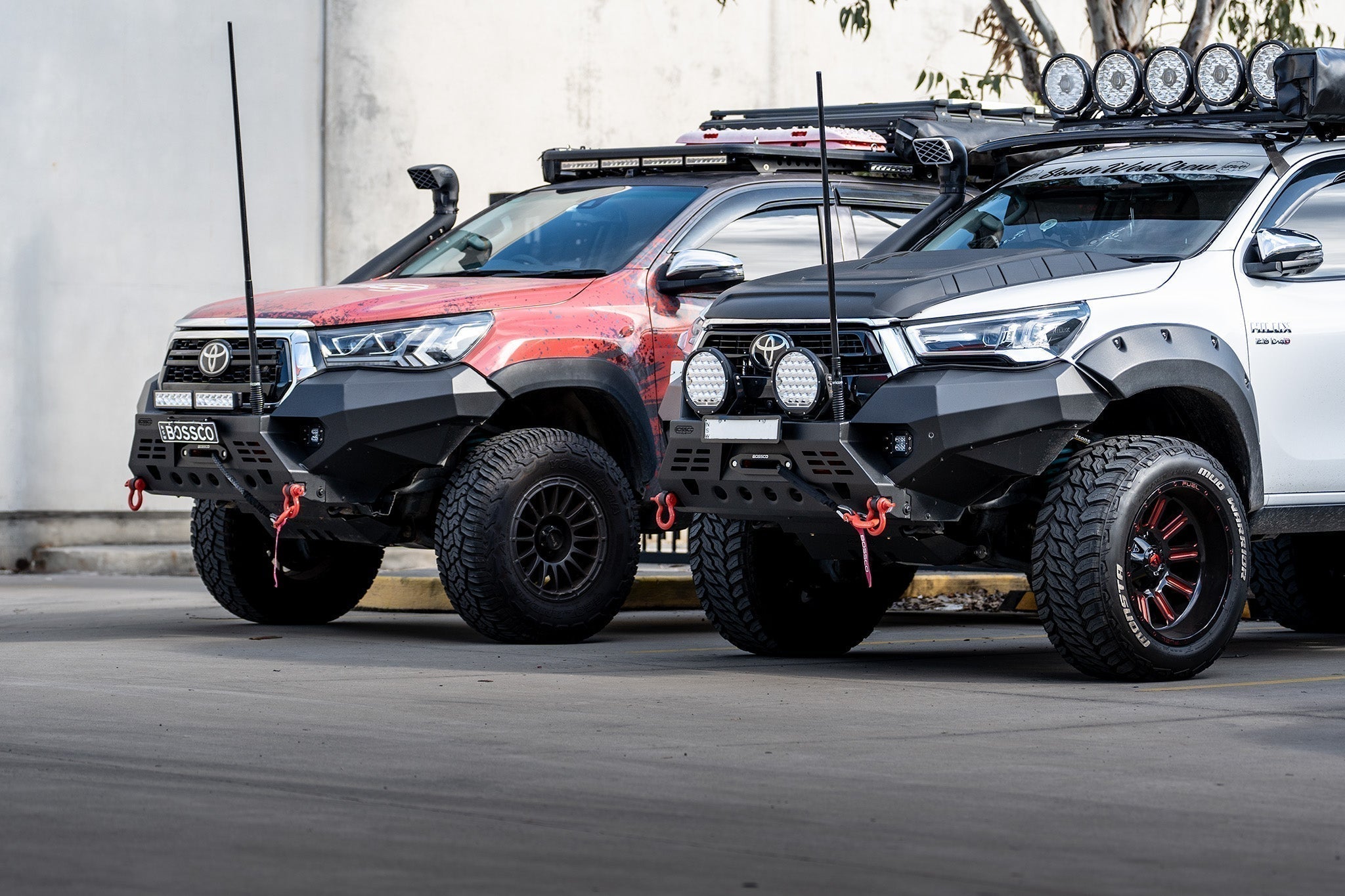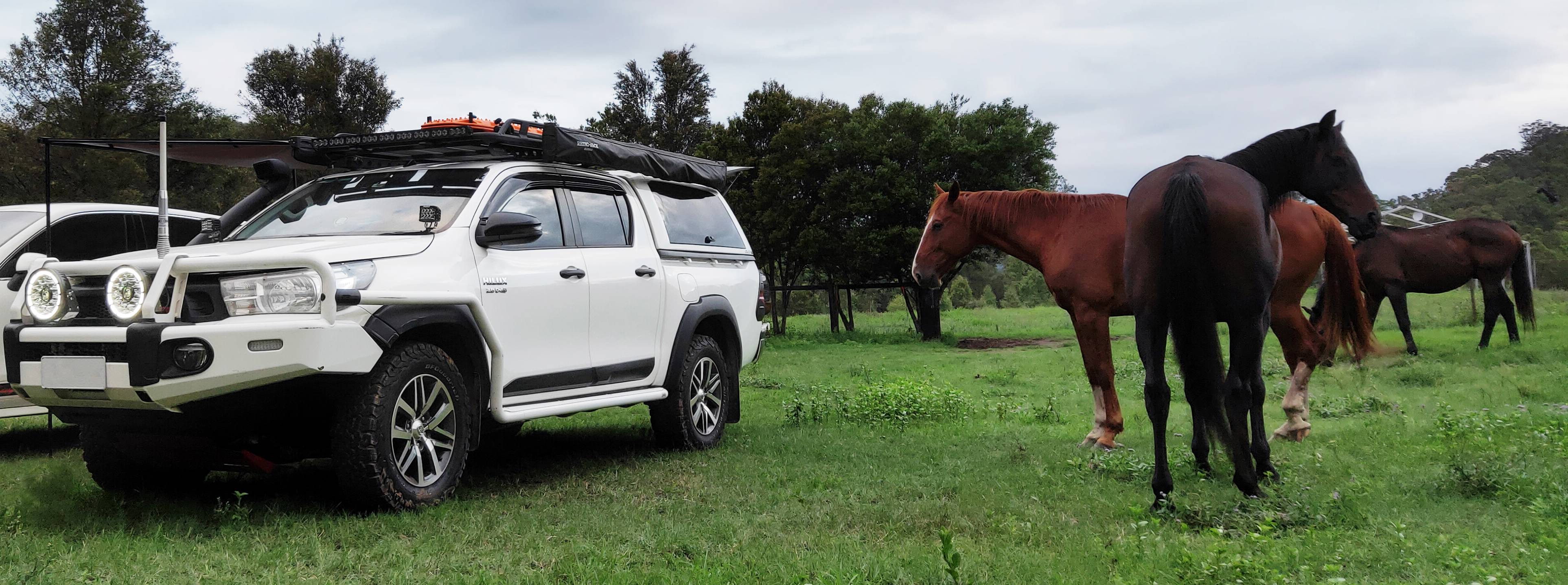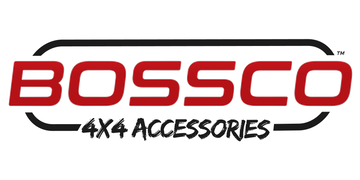
Do I Really Need a Bull Bar? The Pros and Cons Explained
Whether you're kitting out your Hilux for work or planning a cross-country trip in your Ranger, one of the first accessories many 4WD owners consider is the bull bar. But is it really essential, or just a bit of bush bling?
At Bossco Auto, we’ve fitted thousands of bull bars for Sydney locals and off-road adventurers alike. In this guide, we’ll break down the real-world pros and cons of fitting a bull bar, so you can make an informed choice that suits your lifestyle, budget, and vehicle.
What Is a Bull Bar, and What’s It Actually For?
A bull bar is a tough, protective bar fitted to the front of a vehicle, typically made from steel or alloy. Originally designed to shield 4WDs from animal strikes in regional Australia, they’ve evolved to offer much more, from mounting points for accessories to improving approach angles off-road.
Bull bars are now designed to suit a wide range of driving styles, whether you’re a tradie navigating job sites, a tourer heading off-grid, or just someone who wants peace of mind on country roads.
The Pros of Fitting a Bull Bar
1. Protection Against Animal Strikes
Australia has one of the highest rates of animal collisions in the world. Kangaroos, wallabies, and even livestock pose a serious hazard, especially at dawn and dusk on rural roads.
A well-designed, ADR-compliant bull bar can protect critical components like your radiator, headlights, and engine bay. In some cases, it can prevent a complete write-off.
If you regularly drive in regional NSW, QLD, or VIC, this alone may justify the investment.
2. Mounting Point for Accessories
One of the biggest advantages of a bull bar is the ability to mount:
- Driving lights or light bars
- UHF antennas
- Winches
- Recovery points
- Aerials for sand dunes or mining sites
If you’re planning to head off-road or need extra visibility for rural night driving, a bull bar is almost a must.
3. Improved Approach Angles for Off-Roading
Factory bumpers can limit your approach angle and risk damage when hitting steep tracks, washouts, or rocky terrain.
A bull bar improves your front clearance and protects the front end when things get rough, especially steel winch-compatible bars that are designed with off-roading in mind.
For weekend warriors who hit places like the Blue Mountains, Stockton Beach, or the Vic High Country, this is a serious benefit.
4. Tough Look That Complements Your 4x4
Let’s be honest, bull bars look good. They give your ute a commanding, rugged presence that matches its capabilities.
Whether you drive a Ford Ranger Raptor, Toyota Hilux Rogue, or an Isuzu D-MAX X-Terrain, the right bull bar can turn heads while still serving a practical purpose.
Plus, they add resale value to your vehicle when fitted professionally and documented.
The Cons (and Considerations)
1. Weight and Fuel Consumption
Steel bull bars are strong, but heavy. A full winch-compatible bar can add 40–60kg to the front of your vehicle.
This affects fuel consumption, suspension wear, and, in some cases, GVM (Gross Vehicle Mass) limits, which can be a problem if you’re already close to payload capacity.
Opting for alloy bull bars can reduce weight, though they’re generally less impact-resistant than steel.
2. Cost of Installation
Quality bull bars range from $1,000 to $3,000+ depending on the brand, material, and vehicle model, not including fitting or accessories like winches and lights.
That’s a big outlay, especially if you’re also investing in a canopy, suspension lift, or roof rack setup.
However, spreading the cost across your build plan and prioritising based on where you drive can help.
3. Compatibility with Sensors and Airbags
Modern 4x4s are packed with tech, parking sensors, radar cruise, and AEB (autonomous emergency braking).
Fitting the wrong bull bar can interfere with these systems. That’s why it’s critical to only install ADR-approved bull bars that are airbag compatible and designed specifically for your make and model.
At Bossco Auto, all bars we fit meet these requirements, and we test every install thoroughly.
4. Legal Compliance (Especially in NSW)
Each Australian state has rules around what is and isn’t allowed in a bull bar design. In NSW, your bull bar must:
- Not obstruct headlights or number plates
- Be airbag-compatible
- Not have sharp edges or protrusions
- Meet ADR (Australian Design Rules)
We only stock legal, roadworthy bull bars, and our fitters are across all the current regulations to ensure you're compliant.
So… Do You Actually Need a Bull Bar?
Ask yourself the following:
- Do you regularly drive on regional or wildlife-prone roads?
- Are you planning serious off-roading or recovery work?
- Do you need mounting options for lights, antennas, or a winch?
- Is the “tough” look part of your vehicle’s identity?
If you said yes to two or more of these, a bull bar could be a smart investment.
If your 4WD is mostly used around the city and you’re not planning remote travel, it might be worth holding off, or opting for a lighter nudge bar or slimline alloy bar that gives you the look and some mounting options, without the full weight or cost.
Final Word from Bossco Auto
At the end of the day, the decision to fit a bull bar depends on your driving habits, risk profile, and build goals. There’s no one-size-fits-all answer, but there is a bull bar that suits your needs.
We stock a huge range of bull bars for Australia’s most popular utes and 4WDs, including the Toyota Hilux, Ford Ranger, Isuzu D-MAX, Mitsubishi Triton, and more. Whether you want black steel with winch compatibility or something sleeker and lightweight, our Sydney team is here to help.
Need Help Choosing the Right Bull Bar?
Visit our Sydney showroom or chat with our expert team today. We'll help you match the perfect bull bar to your rig, and get it fitted right the first time.
About the Author
Andrew is a 4WD specialist at Bossco Auto with deep knowledge of vehicle upgrades, touring setups and off-road gear. He combines years of industry experience with a passion for helping everyday Aussies build rigs that are ready for anything. From LED lighting to canopy fitouts, Andrew shares practical advice that’s grounded in real-world use. When he’s not writing or wrenching, he’s out exploring the tracks of NSW.


